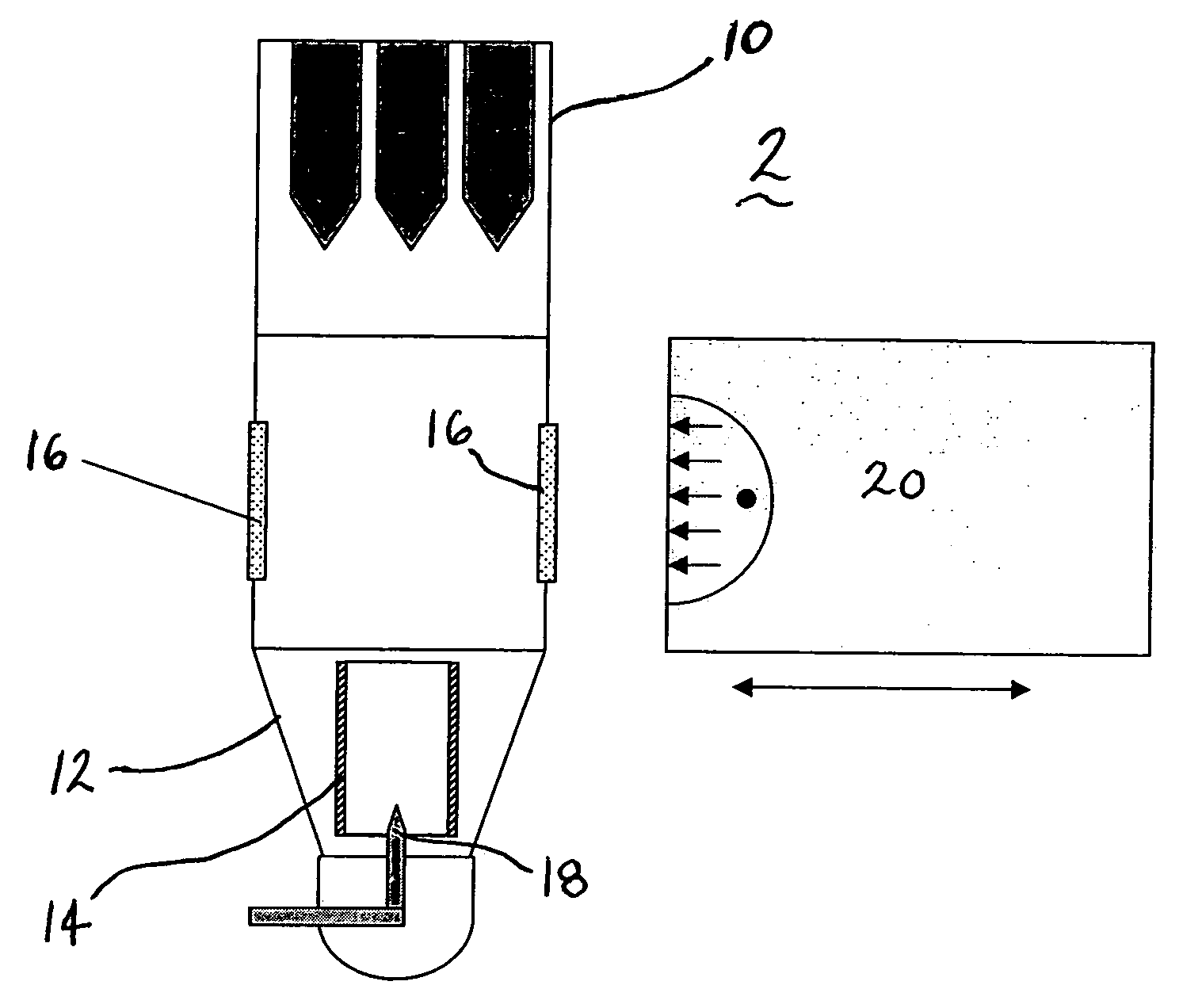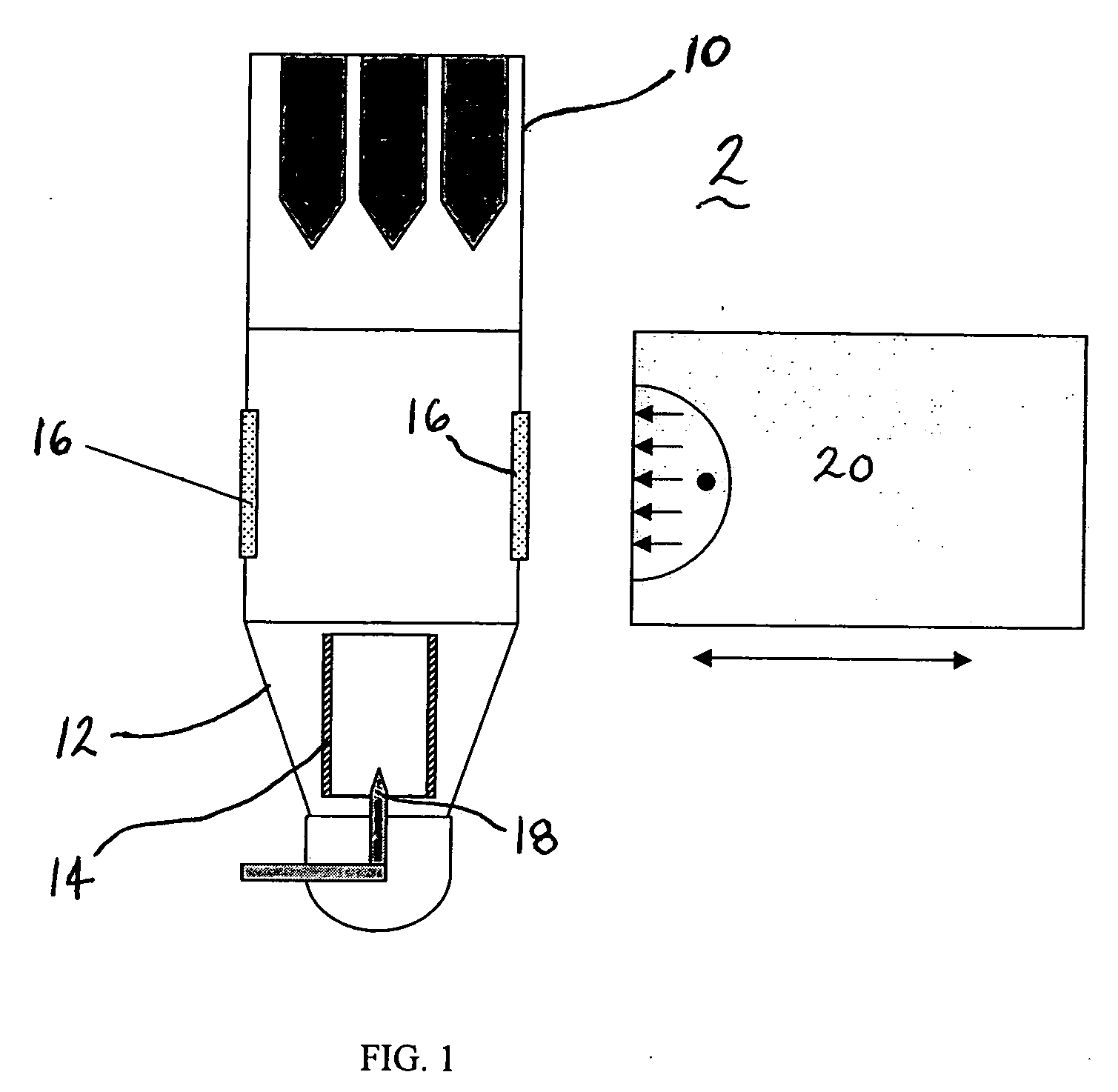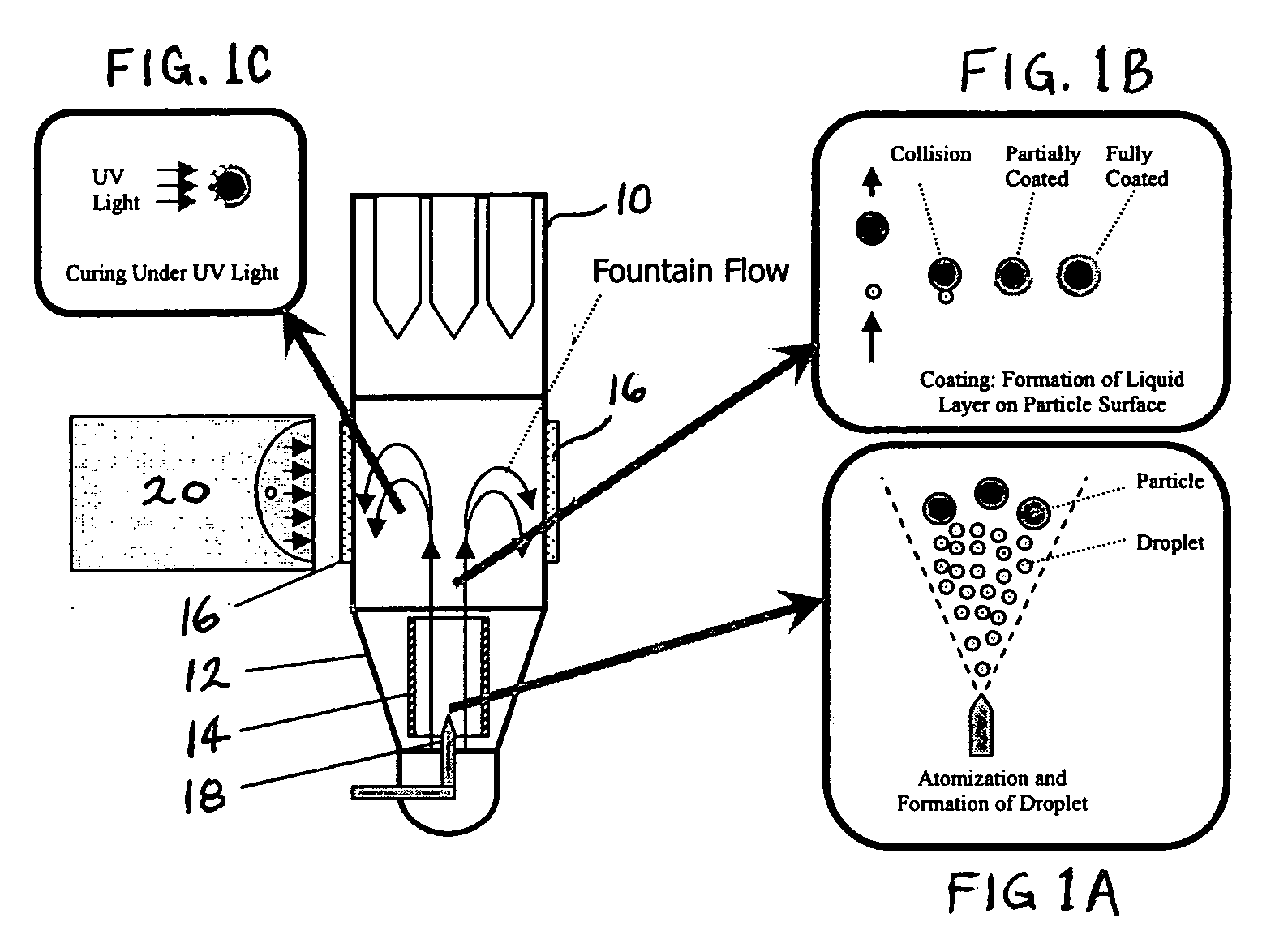Ultraviolet particle coating systems and processes
a technology of ultraviolet coating and particle coating, applied in the field of particle coating, can solve the problems of environmental, health and cost concerns, common use of solvent or non-solvent in conventional particle coating processes, and prone to agglomeration in conventional liquid spray particle coating processes, etc., to achieve rapid polymerization/curing reaction, wide range of available properties, and rapid creation of tack-free surfaces
- Summary
- Abstract
- Description
- Claims
- Application Information
AI Technical Summary
Benefits of technology
Problems solved by technology
Method used
Image
Examples
experiment i
[0055] Table 5 shows the operating conditions in the coater wherein the curing ratio of Formulation E98C was tested in a coating process. Table 6 lists the sampling procedure. The samples were tested at concentration of UV chemicals at 0.93% and 1.64% vol. Thermo-Gravimetric Analysis (TGA) was employed in the sample analysis. As seen in Table 7 it was observed at about half of the UV chemicals were cured, and elongation in curing time helps to increase the ratio of cured materials
TABLE 5Operational ParametersGap BetweenFluidizationAtomizationPumping flowWurster tubeWeight ofPressurePressurerateand air screenParticle0.4 Bar0.6 Bar0.255 ml / min12 mm210 gAirUV LiquidSecondaryUV ExposureTemperatureper shotAir Pressuretime Per shot25° C.0.273 ml20 psi180 s
[0056]
TABLE 6Sampling during CoatingStep Num.Amount ofConcentration offorAdded UVUV LightUV chemicalsFeedingChemicalsExposure TimeSampling(vol.)10.273 ml30 s + 30 s20.273 ml30 s + 30 s30.273 ml30 s + 30 s40.273 ml30 s + 30 sSample 10.9...
experiment ii
[0058] Table 8 lists the operating conditions in the process. Table 9 shows the sampling procedure. The UV chemical was Formulation E98C. The air screen was modified with a paper filter, in order to adjust the fluidization behavior.
TABLE 8Operating conditionsGap BetweenFluidizationAtomizationPumpingWursterWeight ofPressurePressureflow ratetube and air screenParticle0.66 Bar1.0 Bar0.2 cc / min12 mm230 gAirUV LiquidSecondaryUV ExposureConcentrationTemperatureper shotAir Pressuretime Per shotof UV liquid25° C.0.3 ml20 psi180 s1.4% vol.
[0059]
TABLE 9Amount UVUV lightSpray / Curing StepChemicalsexposure time (s)10.3 ml180 s20.3 ml180 s30.3 ml180 s40.3 ml180 s50.3 ml180 s60.3 ml180 s7360 s
[0060] Now referring to FIGS. 3A-3D and 4A-4D Scanning Electron Microscopy (SEM) with EDX module was employed to determine the coating quality on the surfaces of particles. FIGS. 3A-3D show the SEM pictures of uncoated KCL particles at different magnitudes. It is seen that the particulate surfaces are not s...
experiment iii
[0061] Table 10 lists the operating conditions and Table 11 lists the sampling procedure. The air temperature was raised to 50° C. in this experiment, instead of 25° C. in Experiment II. The UV chemical amount per shot and the UV exposure time were also adjusted in order to shorten the total processing time.
TABLE 10Operating conditionsGap BetweenFluidizationAtomizationPumpingWurster tubeWeight ofPressurePressureflow rateand air screenParticle0.66 Bar1.0 Bar0.2 cc / min12 mm230 gAirSecondaryConcentrationTemperatureAir Pressureof UV liquid50° C.20 psi1.4% vol.
[0062]
TABLE 11Spray / Amount UVUV lightCuring StepChemicalsexposure time (s)10.3 ml180 s20.3 ml180 s30.6 ml180 s40.3 ml360 s50.3 ml360 s
[0063]FIGS. 5A-5D show the SEM pictures of particles coated according to this experiment. The previously non-smooth KCL surface is smooth as a result of coverage with UV chemicals.
[0064] Confocal Raman Spectroscopy was used to check the curing of UV chemicals, as shown in FIG. 6A. FIG. 6A is spect...
PUM
| Property | Measurement | Unit |
|---|---|---|
| wavelength | aaaaa | aaaaa |
| time | aaaaa | aaaaa |
| cure time | aaaaa | aaaaa |
Abstract
Description
Claims
Application Information
 Login to View More
Login to View More - R&D
- Intellectual Property
- Life Sciences
- Materials
- Tech Scout
- Unparalleled Data Quality
- Higher Quality Content
- 60% Fewer Hallucinations
Browse by: Latest US Patents, China's latest patents, Technical Efficacy Thesaurus, Application Domain, Technology Topic, Popular Technical Reports.
© 2025 PatSnap. All rights reserved.Legal|Privacy policy|Modern Slavery Act Transparency Statement|Sitemap|About US| Contact US: help@patsnap.com



